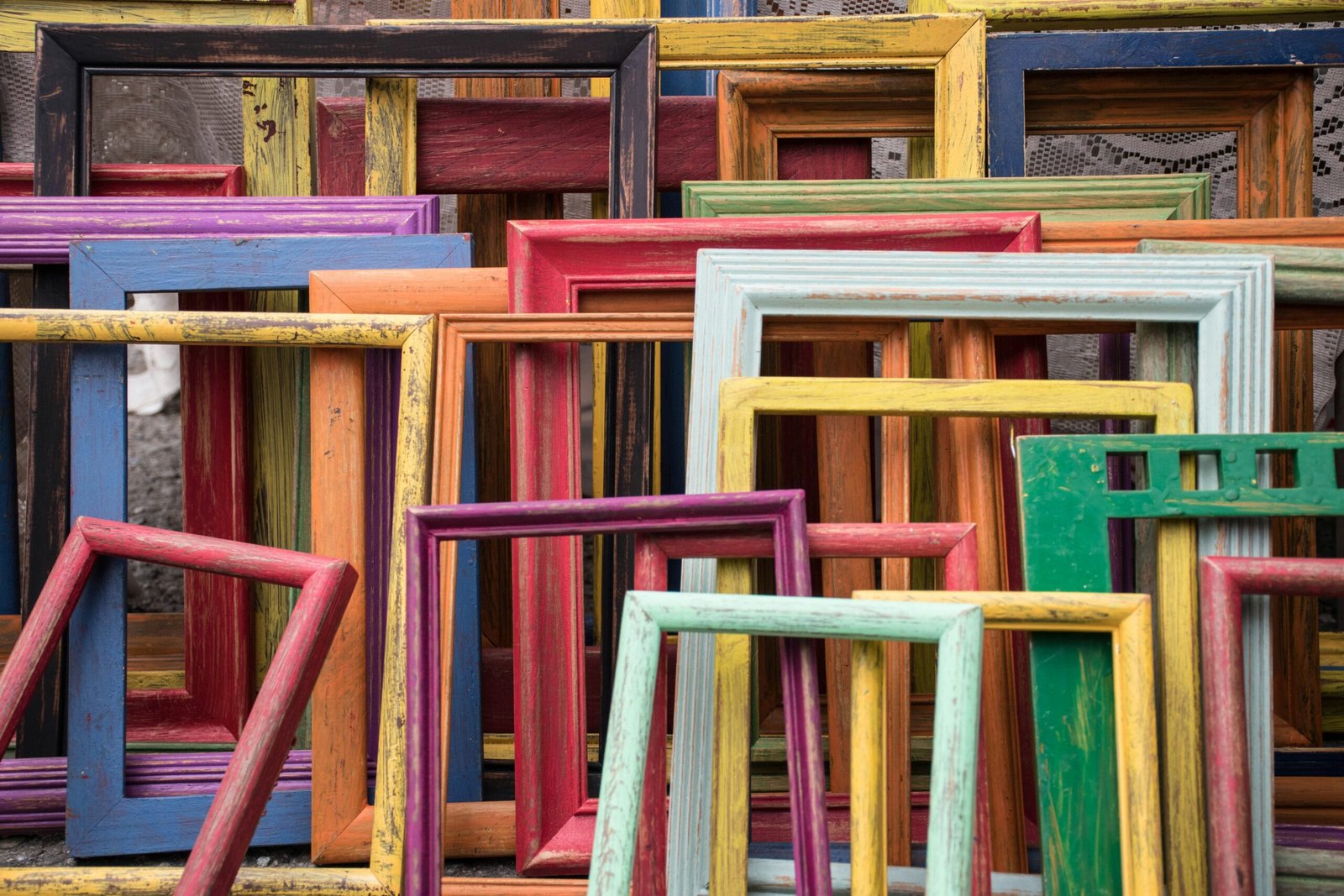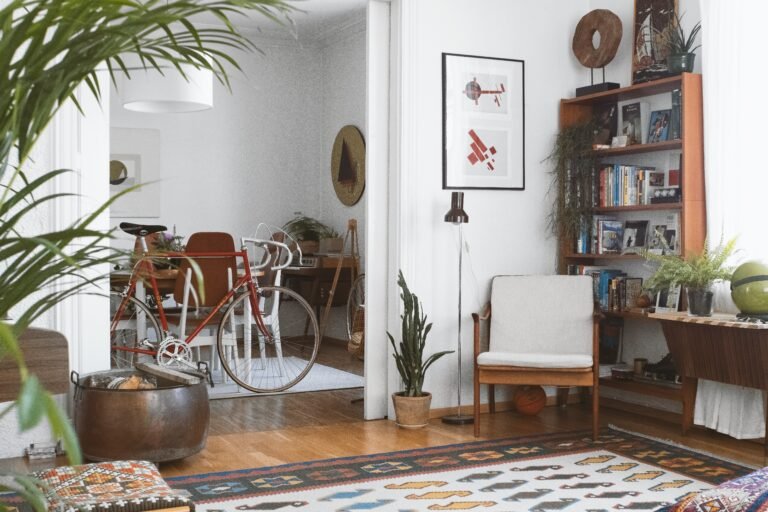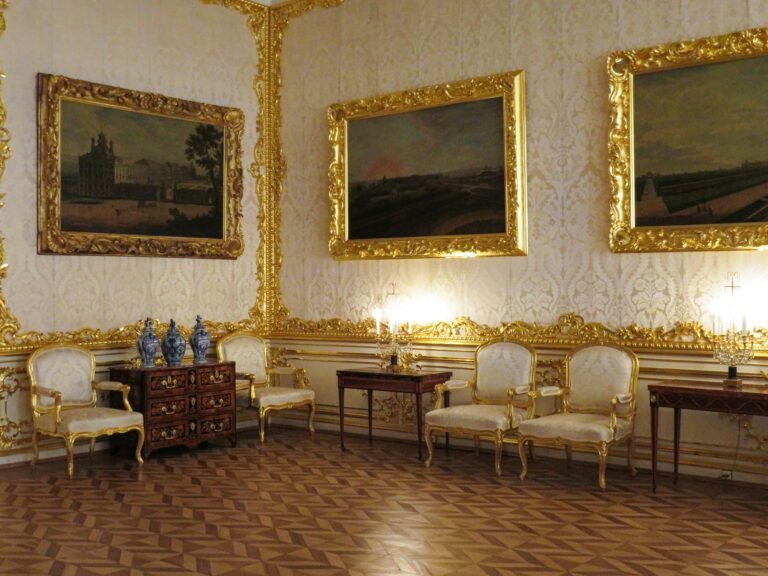A maximalist interior is more than just a design choice, it is a celebration of personality, creativity, and bold self-expression. Unlike the restrained world of minimalism, maximalism thrives on bold patterns, eclectic style, layered textures, and a mix of prints that tell a story about who you are. From the first time I experimented with clashing colors and oversized artwork in my own home, I realized how liberating it feels to design a space without the limits of “less is more.” Instead, maximalism embraces “more is more,” allowing every corner of a room to radiate life and character.
In this article, I’ll explore how to bring the maximalist interior look to life through daring prints, vibrant layering strategies, and eclectic combinations that strike the right balance between drama and harmony. Along the way, I’ll share design insights, expert trends, and personal reflections to help you create a home that feels joyful, unapologetically unique, and deeply personal.
What Defines a Maximalist Interior
At its core, a maximalist interior is about embracing abundance rather than restraint. Where minimalism strips away to achieve calm simplicity, maximalism layers patterns, colors, textures, and meaningful objects to create a sense of richness and personality. As Havenly explains, maximalism celebrates individuality, transforming a home into a canvas for self-expression rather than a showroom of rules.
A maximalist interior does not mean clutter or chaos. Instead, it is a carefully curated mix of bold patterns, striking art, and sentimental pieces that coexist harmoniously. According to Homes & Gardens, the beauty of maximalism lies in layering – the thoughtful combination of prints, textures, and color palettes that add visual depth while still feeling inviting.
Some defining elements include:
- Layered textures like velvet, rattan, and lacquered finishes.
- A mix of prints—florals with geometrics, stripes with animal prints.
- Eclectic style that allows vintage finds to sit beside modern furniture.
- A strong sense of storytelling, where each object has a memory or meaning attached.
Personally, I’ve always loved that maximalism allows me to showcase items I’ve collected during travels, things that might feel “too much” in a minimalist home but thrive in a layered, expressive environment. In this way, maximalist design not only decorates a space but also narrates a story about the people who live there.
The Power of Bold Patterns and Eclectic Style
When you step into a room designed with bold patterns and an eclectic style, you immediately feel the energy shift. Patterns have the power to create rhythm, movement, and focus, while eclecticism ensures that no two spaces ever look the same. Together, they form the beating heart of a maximalist interior.
Designers and trend watchers have noticed a surge in patterned upholstery, particularly when it comes to statement sofas. As Architectural Digest points out, a patterned couch can act as both a practical choice – hiding the wear and tear of daily life – and a dramatic focal point. This perfectly reflects the philosophy of maximalism: why settle for neutral when your furniture can double as art?
The growing popularity of Scandi maximalism further proves that bold doesn’t have to mean chaotic. According to Homes & Gardens, this variation blends the structured simplicity of Scandinavian design with the richness of maximalist layers, resulting in rooms that feel both joyful and serene.
Some ways bold patterns and eclectic style transform a space include:
- Adding drama – Geometric wallpaper or oversized florals command attention.
- Creating harmony in contrast – Pairing stripes with botanicals or animal prints sparks visual intrigue.
- Infusing personality – The more unusual the combination, the more uniquely “you” the room becomes.
- Enhancing mood – Bright, saturated patterns lift spirits, while darker motifs evoke coziness and depth.
In my own home, I once paired a vintage Persian rug with a modern velvet sofa covered in tropical leaf fabric. At first, it felt daring, even risky. But over time, I realized how the juxtaposition made the room feel alive, like a conversation was happening between different styles and eras. That’s the beauty of maximalism: it thrives on unexpected harmony.
Layering Strategies for Texture and Depth
One of the secrets to a successful maximalist interior is mastering the art of layering. Without thoughtful layering, bold patterns and eclectic pieces can feel disconnected. But when textures, prints, and finishes are intentionally combined, the result is a room that feels rich, inviting, and cohesive.
According to Havenly, layering begins with a strong foundation. That might be a bold wall color, a patterned rug, or even a large-scale piece of art. From there, you can build dimension through textiles, accent furniture, and accessories. Architectural Digest emphasizes that a patterned anchor, such as a sofa, makes mixing additional prints less intimidating, because it sets the tone for the rest of the room.
Here are practical strategies for layering like a pro:
- Start with an anchor piece: A patterned sofa, dramatic wallpaper, or statement rug gives you a visual base.
- Mix scales of prints: Pair oversized florals with small geometrics, or wide stripes with delicate botanicals.
- Play with layered textures: Velvet cushions, rattan chairs, lacquered side tables, and shaggy rugs create depth.
- Add animal print accents: A timeless way to inject sophistication while keeping the space playful.
- Incorporate personal elements: Travel souvenirs, family heirlooms, or quirky art pieces bring authenticity.
- Experiment with wallpaper: Whether it’s a moody mural or a whimsical print, walls are a blank canvas for maximalist expression.
When I redecorated my living room, I experimented with layering a jewel-toned velvet sofa against tropical print wallpaper and topped it off with embroidered cushions. At first, I worried it might feel overwhelming, but layering textures softened the intensity of the patterns. Instead of clashing, each piece felt like part of a larger story.
The key is not to hold back. A maximalist interior thrives when layers feel abundant, but each layer also serves a purpose, whether adding comfort, sparking interest, or expressing your personality.
Balancing More Is More Without Clutter
One of the most common misconceptions about a maximalist interior is that it equals chaos. In reality, maximalism is not about hoarding or cramming every surface with objects. It’s about intentional layering, where each piece contributes to the overall story of the room. The philosophy of “more is more” works only when balance and harmony guide the design choices.
As House & Garden notes, successful maximalist spaces rely on deliberate curation. You may see a mix of prints, colors, and textures, but they are thoughtfully arranged to create visual rhythm. Similarly, Bed Threads emphasizes that eclectic style doesn’t mean clutter, it’s about celebrating contrast while maintaining a sense of order.
Some tips to balance “more is more” without tipping into disorder:
- Choose a cohesive color palette: Bold doesn’t mean random. A unifying set of colors helps different patterns and textures work together.
- Create breathing space: Let certain areas remain less decorated so the eye has room to rest.
- Group objects by theme: Collections—whether books, ceramics, or art—feel intentional when displayed together.
- Embrace symmetry: Pairing bold items (like patterned chairs) on either side of a fireplace or table grounds the space.
- Think in layers, not piles: Layering textures like throws, pillows, and rugs feels curated, while stacks of unused items can look cluttered.
Social media has played a role in redefining maximalism, too. TikTok creators have popularized what they call “organized chaos,” showing how to display bold collections without sacrificing livability. Architectural Digest highlights how these influencers prove maximalism can be both practical and visually stunning.
In my own experience, I found that editing is just as important as adding. After filling my bookshelves with everything I loved, I stepped back and realized the effect was overwhelming. By removing a few pieces and grouping similar items together, the shelves transformed from messy to magnetic. That balance, the right mix of bold patterns, layered textures, and breathing space is what makes maximalism feel abundant but not chaotic.
Inspiration from Designers and Trendsetters
A maximalist interior comes alive when we look at the designers and creatives who have mastered the art of bold storytelling through space. Their work demonstrates how bold patterns, layered textures, and eclectic style can be both expressive and sophisticated.
One of the most exciting names in this movement is Yinka Ilori, a British designer celebrated for his joyful use of color and pattern. His installations show that maximalism isn’t confined to interiors, it can extend to public spaces, creating environments that spark emotion and conversation.
India Mahdavi, often called the “queen of color,” demonstrates how playful palettes can turn any room into an unforgettable experience. Her work blends modern sensibility with a childlike sense of wonder, proving that maximalism thrives on fearless creativity.
For those who prefer a glamorous edge, Kelly Wearstler embodies sophisticated maximalism. Her interiors combine sculptural furniture, layered finishes, and statement art pieces to create luxurious yet daring atmospheres.
It’s not just designers driving the trend, celebrities are embracing maximalism in their homes, too. Actor Josh Brolin recently sparked debate with a boldly decorated living room that leaned into retro influences and vibrant hues, as featured by Homes & Gardens. Meanwhile, influencer and actress Dylan Mulvaney opened the doors to her whimsical Los Angeles home, where each room reflects a playful yet curated maximalist vision, highlighted by People.
These examples remind me that maximalism isn’t a rigid formula but a creative playground. Seeing how professionals and celebrities interpret the style encourages me to trust my instincts when mixing prints, layering textures, and displaying personal treasures. Sometimes the most powerful design decisions come from daring combinations that feel unconventional but ultimately tell the most authentic story.
Budget Friendly Maximalism
One of the myths about a maximalist interior is that it requires endless spending to achieve the layered look. In reality, bold patterns, eclectic style, and richly textured spaces can be created on almost any budget. The secret lies in creativity, patience, and knowing where to find hidden treasures.
Thrift and vintage shops are gold mines for maximalists. As Better Homes & Gardens notes, many of the vibrant trends from the 1970s, like patterned upholstery and bold wall treatments are making a comeback. These retro pieces often surface in secondhand markets, allowing you to embrace authentic maximalist style without breaking the bank.
The Spruce highlights how comedian Nicole Byer built her colorful, layered home slowly, piece by piece. Her advice is to start small like adding a patterned pillow, a bold rug, or a gallery wall then expand as you discover your style. This gradual approach makes maximalism more affordable and less intimidating.
Here are some budget friendly strategies to bring maximalism into your home:
- Thrift, don’t splurge: Vintage markets, flea shops, and estate sales often have one-of-a-kind pieces that anchor a room.
- Reimagine old furniture: A fresh coat of lacquer or reupholstering in a vibrant fabric can transform a tired piece.
- DIY gallery walls: Frame your favorite prints, postcards, or even fabric swatches for an eclectic yet personal touch.
- Use textiles strategically: Throw blankets, curtains, and pillows in layered textures and patterns make a huge impact without major cost.
- Decorate in stages: Building a maximalist interior over time ensures every item has meaning, not just a price tag.
In my own experience, some of the most complimented pieces in my home are vintage finds I scored for under $20. A patterned ceramic vase from a flea market sits proudly on my bookshelf, surrounded by newer items, and no one can tell it wasn’t part of a high-end collection. That’s the beauty of maximalism, you don’t need a luxury budget to create a rich, expressive space.
Conclusion
A maximalist interior is not just a design trend, it is a way of living that embraces individuality, creativity, and joy. By leaning into bold patterns, layered textures, and an eclectic style, you create a home that feels alive with character and deeply personal meaning. Where minimalism strips away, maximalism layers stories, memories, and beauty, transforming every corner into a reflection of who you are.
As I’ve discovered in my own spaces, the key is balance: mixing prints and colors with intention, layering textures to add depth, and leaving room for the eye to rest. Maximalism isn’t about perfection, it’s about authenticity. Whether you source treasures from flea markets, invest in a patterned anchor piece, or simply display items that bring you happiness, the result will always feel uniquely yours.
If you’ve ever felt drawn to design without boundaries, now is the time to experiment. Start with a single statement piece, add layers gradually, and trust your instincts. In the end, a maximalist interior allows you to celebrate abundance and embrace a home that is unapologetically bold, eclectic, and unforgettable.
Frequently Asked Questions about Maximalist Interior
Alex is the creator of Homely Haven, a space dedicated to simple, stylish ideas for interiors and gardens alike. With a passion for cozy living rooms, inviting outdoor spaces, and practical DIY solutions, Alex shares tips and guides that help turn any house into a true home.
From budget-friendly decorating hacks to weekend garden projects, the goal is always the same: to inspire you to create spaces that feel personal, beautiful, and welcoming. When not writing, Alex is usually rearranging furniture, sketching new garden layouts, or exploring design trends for the next project.








